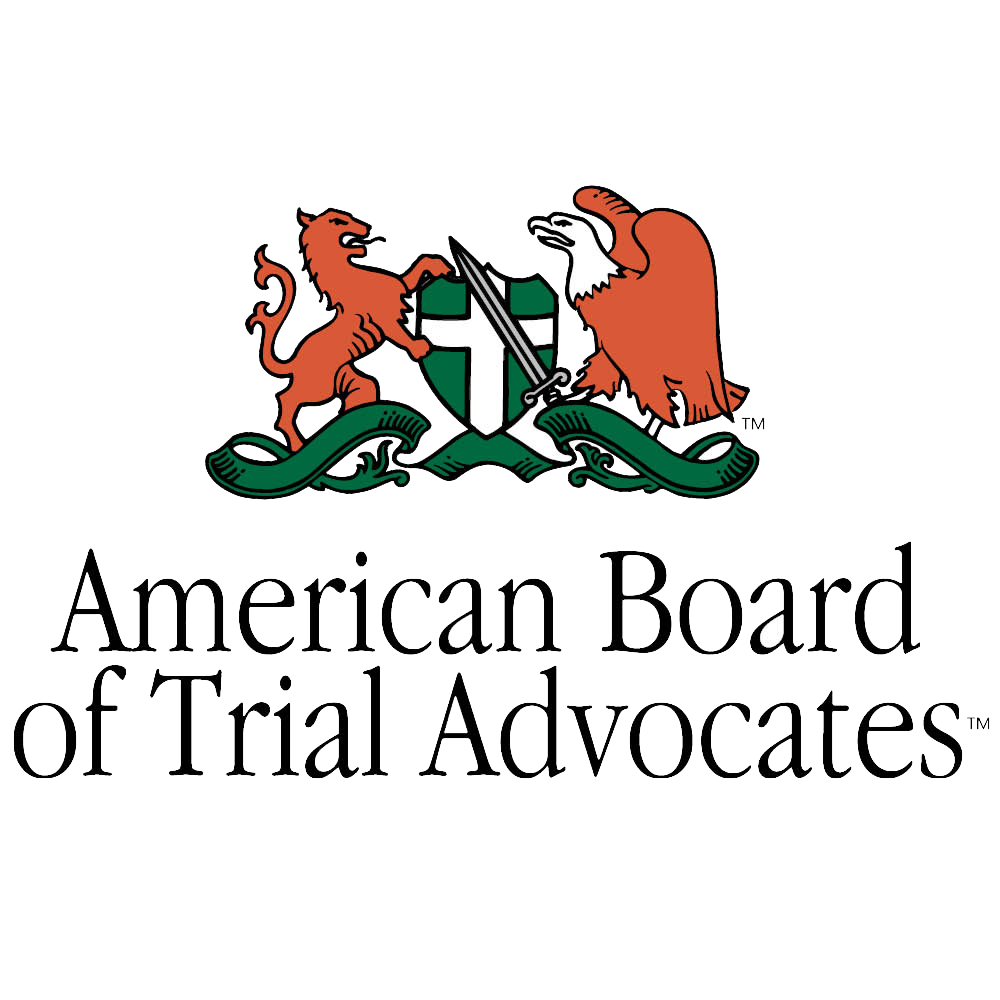
The Invisible Threat: Semi-Truck Blind Spots That Can Change Your Life in Seconds
Every day, thousands of Florida drivers share I-95 with massive semi-trucks, unaware they’re driving in zones where these 80,000-pound vehicles simply cannot see them. With American adults not fully understanding truck blind spots, this lack of awareness creates perfect conditions for catastrophic accidents. These hidden danger zones aren’t just traffic concerns—they’re potential financial disasters that can saddle victims with medical bills exceeding $250,000. When semi-trucks and passenger vehicles collide, the results are rarely minor, leaving families facing life-changing injuries, staggering medical expenses, and uncertain futures.
Don’t let the complexities of a semi-truck accident leave you in a bind. Reach out to GOLDLAW for guidance on navigating these challenging waters. Call us at 561-222-2222 or contact us today to ensure your rights and your future are secure.

Understanding Your Rights After a Blind Spot Truck Accident in Florida
Florida law provides important protections for those injured in semi-truck accidents. Unlike regular car accidents, truck collision cases involve complex liability questions that often extend beyond just the driver, including trucking companies, maintenance contractors, and cargo loaders. Florida operates under comparative negligence rules, meaning you can recover damages even if partially at fault, though your percentage of responsibility may reduce your compensation. The state’s statutes also allow victims to pursue compensation for medical expenses, lost wages, pain and suffering, and future care needs. However, truck accident claims face unique challenges even in cases where you have expert witnesses on your side—trucking companies deploy teams of attorneys immediately after accidents, and crucial evidence like black box data and driver logs can disappear quickly.
Tip: The web of federal trucking regulations adds layers of complexity most people never anticipate until they’re caught in the aftermath.
The Critical Timeline: What Happens After a Semi-Truck Blind Spot Collision
Understanding the timeline after a truck accident helps victims prepare for what lies ahead. Here’s what you need to know about the process:
-
Florida’s statute of limitations gives you just two years from the accident date to file a lawsuit—half the time allowed before recent legal changes took effect in 2023.
-
Trucking companies often dispatch rapid response teams to accident scenes within hours, collecting evidence and building their defense while victims still receive medical care.
-
Electronic control module data (the truck’s “black box”) can be overwritten in as little as 30 days, potentially erasing crucial evidence about the driver’s actions before the crash.
-
Federal regulations require drivers to maintain hours-of-service logs, but paper versions can be legally destroyed after just six months, making prompt legal action essential.
-
Insurance adjusters typically contact victims within 72 hours, offering quick settlements that rarely account for long-term medical needs or future complications.
Tip: The sequence of events following a collision from truck blind spots often progresses faster than many realize, with critical evidence disappearing and important deadlines approaching more quickly than in standard vehicle accidents.
Finding Your Path Forward: How an Experienced Semi-Truck Accident Attorney Makes the Difference
Resolving a truck blind spot accident case requires specialized knowledge that bridges state and federal transportation laws. At GOLDLAW, we recognize that victims need representation that understands the unique dynamics of commercial vehicle accidents. The resolution process typically involves thorough accident reconstruction, expert testimony about blind spot limitations, and detailed compliance analysis with federal safety regulations. With trucking companies employing sophisticated defense teams, having representation that knows how to secure electronic logging device data, dispatch records, and maintenance logs often becomes the difference between adequate compensation and financial hardship.
Tip: Victims who work with knowledgeable truck accident attorneys recover substantially more than those who navigate these waters alone because they avoid the common pitfalls that insurance companies count on to minimize payouts.
The Top 5 Hidden Dangers of Semi-Truck Blind Spots on I-95
Understanding the blind spot dangers unique to semi-trucks helps drivers protect themselves on Florida’s busiest highway. These aren’t just minor visibility issues—they’re substantial zones where 80,000-pound vehicles move without seeing surrounding traffic. Each blind spot presents distinct risks and the absence of commonly overlooked security measures that contribute to different accident patterns and injury scenarios.
1. The 20-Foot Front Zone: The Deceptive Forward Blind Spot
Most drivers assume truck drivers can see everything before them, but a semi’s elevated cab creates a dangerous forward blind spot extending up to 20 feet. When vehicles cut in front of trucks without allowing this buffer, they disappear from the driver’s view. We’ve seen cases where drivers merged in front of trucks thinking they had plenty of space, only to have the truck driver never see them when traffic suddenly slowed.
Tip: This blind spot is perilous in stop-and-go I-95 traffic, where a truck driver may not realize a vehicle has entered this zone until it’s too late to avoid crushing it from behind.
2. The 30-Foot Rear “No Zone”: Where Tailgating Becomes Life-Threatening
Following too closely behind a semi-truck creates more danger than most drivers realize. The rear blind spot extends about 30 feet behind the trailer, making tailgating trucks particularly hazardous. This zone becomes even more dangerous when combined with the truck’s limited braking ability. Semi-trucks require 40% more stopping distance than passenger vehicles—up to 525 feet (nearly two football fields) when traveling at highway speeds. When following in this blind zone, drivers have no visual contact with the truck driver and are positioned where rear-impact guards may fail to prevent underride accidents.
Tip: This often results in catastrophic injuries, including decapitation.
3. The Massive Right-Side Blind Spot: The Most Dangerous Zone
The right-side blind spot extends across multiple lanes and runs nearly the entire truck length, making it the largest and most lethal of all truck blind zones. This blind spot is particularly hazardous on I-95 where merging traffic enters from the right. Truckers making lane changes to accommodate merging vehicles may not know cars are traveling in this massive blind zone. The risk compounds because many drivers incorrectly assume that if they can see the truck’s mirrors, the truck driver can see them.
Tip: This is a dangerous misconception that leads to devastating sideswipe and squeeze accidents where vehicles are forced off the road or crushed against barriers.
4. The Medical and Financial Impact of Blind Spot Accidents
The physical and financial consequences of semi-truck blind spot accidents far exceed those of typical vehicle collisions. These accidents frequently result in catastrophic injuries requiring extensive medical treatment, rehabilitation, and often lifetime care. The American Trucking Association reports that when fatalities occur in truck-passenger vehicle collisions, the occupants of the passenger vehicle account for 97% of deaths. For survivors, the financial impact extends far beyond initial emergency care.
Tip: Many victims find their health insurance insufficient to cover specialized treatments, leaving them facing medical bills that can quickly reach or exceed $250,000, especially in cases involving spinal cord injuries, traumatic brain injuries, or multiple surgeries.
5. The Hidden Long-Term Consequences Most Victims Don’t Anticipate
Beyond immediate medical expenses, truck accident victims often face extended financial burdens that insurance companies rarely account for in initial settlement offers. These include home modifications for accessibility (averaging $30,000-$50,000), specialized adaptive equipment not covered by insurance, long-term physical therapy (often limited to 20-30 sessions by insurance despite needs extending for years), lost earning capacity over decades of work life, and substantial caregiving costs. Many victims also require vocational rehabilitation if they cannot return to their previous employment, adding another layer of expense that few anticipate in the aftermath of their accident. Understanding these long-term financial implications is crucial when evaluating settlement offers that might seem adequate for current bills but fail to address future needs.
Tip: Working with a West Palm Beach truck accident lawyer is a great way to get the settlement you deserve.
Preventing Blind Spot Accidents: Defensive Driving Strategies on I-95
While understanding your legal rights is essential, preventing these devastating accidents in the first place should be every driver’s priority. The unique traffic patterns and high commercial vehicle volume on I-95 through Florida create conditions where defensive driving around semi-trucks becomes particularly important.
Tip: Implementing specific safety strategies can significantly reduce your risk of becoming involved in a blind spot accident with potentially catastrophic consequences.
The “See and Be Seen” Rule for Avoiding Truck Blind Spots
The most effective way to protect yourself is following the “see and be seen” rule—if you can’t see the truck driver’s face in their mirrors, they cannot see you. When passing trucks, complete the maneuver promptly rather than lingering alongside. Maintain greater following distance behind trucks than you would with passenger vehicles—at least four seconds at highway speeds. Be particularly cautious during lane changes near trucks, and never cut closely in front of a semi, as this places you in the forward blind spot while also eliminating the truck’s stopping distance margin. Remember that blind spots expand in bad weather, so increase your safety margins during Florida’s frequent rain storms.
Tip: These simple adjustments to your driving habits can significantly reduce your risk exposure on I-95’s busy corridors.
Frequently Asked Questions
-
How long do I have to file a lawsuit after a semi-truck accident in Florida?
In Florida, you now have two years from the date of the accident to file a lawsuit for injuries sustained in a semi-truck accident. This represents a shorter timeline than previously allowed, making it crucial to promptly consult with a semi-truck accident lawyer in West Palm Beach after your accident. Waiting too long can permanently bar your right to compensation, regardless of how serious your injuries are.
-
Who can be held liable in a truck blind spot accident on I-95?
Multiple parties may be liable in truck blind spot accidents, including the truck driver, trucking company, maintenance contractors, vehicle manufacturers, and cargo loading companies. A West Palm Beach truck accident lawyer will investigate whether the driver failed to check blind spots properly, if the company neglected proper training, whether the truck lacked required safety equipment like additional mirrors or sensors, or if improper loading contributed to visibility issues. This multi-faceted approach to liability often leads to more comprehensive compensation than typical vehicle accident cases.
-
Can I still recover damages if I was partially at fault for driving in a truck’s blind spot?
Yes, Florida follows a comparative negligence system that allows you to recover damages even if you were partially at fault, though your percentage of responsibility will reduce your compensation. For example, if you were found 20% at fault for driving in a truck’s blind spot and suffered $500,000 in damages, you could still recover $400,000. A Florida truck crash lawyer can help minimize your assigned percentage of fault by demonstrating the truck driver’s greater responsibility to be aware of their vehicle’s limitations.
-
What types of damages can I recover from a semi-truck blind spot accident?
Victims of semi-truck blind spot accidents can typically recover economic damages (medical expenses, lost wages, property damage, future medical care), non-economic damages (pain and suffering, emotional distress, loss of enjoyment of life), and sometimes punitive damages in cases of gross negligence. A West Palm Beach semi-truck injury attorney will calculate both your current and future damages to ensure any settlement or verdict adequately covers long-term needs, particularly for catastrophic injuries that may require lifetime care or prevent return to work.
-
How does a truck accident claim differ from a regular car accident claim?
Truck accident litigation involves significant differences from car accidents, including federal regulations that apply to commercial vehicles, more complex liability involving multiple parties, substantially higher insurance policy limits, more severe injuries leading to larger damages, specialized evidence like black box data and driver logs, and different standards of care for professional drivers. A truck collision attorney in West Palm Beach will have specialized knowledge of these factors and relationships with expert witnesses like accident reconstructionists and trucking safety specialists who can strengthen your claim.
Work with a Semi-Truck Injury Lawyer
When facing the aftermath of a semi-truck blind spot accident, having knowledgeable legal guidance can make the difference between financial recovery and lasting hardship. An experienced semi-truck accident lawyer in West Palm Beach understands the complex interplay of state and federal regulations governing commercial vehicles and can identify violations that strengthen your case. They’ll work with medical experts to fully document your injuries and future needs, accident reconstruction specialists to prove how blind spots contributed to the crash, and economic experts to calculate the lifetime costs of catastrophic injuries. This specialized knowledge allows them to effectively counter trucking companies’ and insurers’ aggressive defense strategies. By consulting with a qualified attorney who focuses on truck accident cases, you ensure your rights are protected throughout the claims process while focusing on what matters most—your recovery.
Don’t let the complexities of a semi-truck accident leave you in a bind. Reach out to GOLDLAW for guidance to navigate these challenging waters. Call us at 561-222-2222 or contact us today to ensure your rights and your future are secure.



